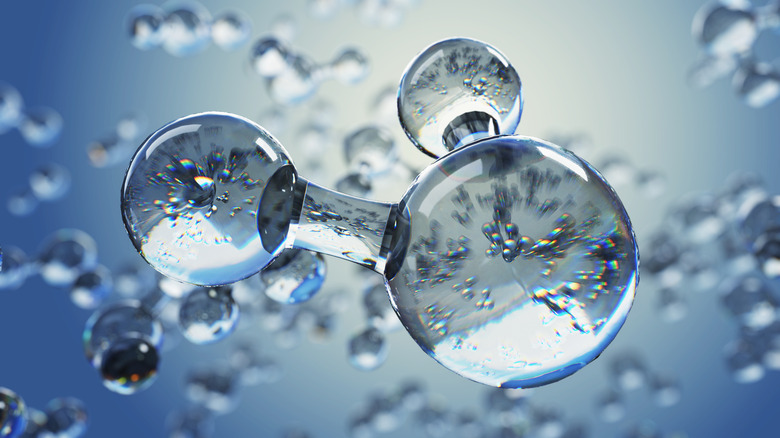What Is A Polar Molecule?
Every molecule has a three-dimensional "shape" of electric charges that comes from the protons and electrons of the atoms it's made of and how they're arranged in space. In some molecules, the charges are spread out fairly evenly. For others, negative charges bunch up on one end, making the other end positive. Polar molecules constitute the latter case. The uneven distribution of charges gives them a distinct electrical polarity.
TL;DR (Too Long; Didn't Read)
A polar molecule has a positive electric charge on one side and a negative charge on the opposite side.
What’s the Charge?
What's the Charge?
The polarity or non-polarity of a molecule is all about how electric charges are distributed among its atoms. For an individual atom, charge distribution is straightforward: The protons with the positive charge are all in the nucleus, and the electrons orbiting the nucleus are all negative. The protons and electrons balance out in a neutral atom, and the atom will have a net negative or positive charge if it gains or loses electrons. In any event, if a tiny imaginary observer "sees" the electric charge of an atom, it looks much the same from the outside. One side or part is not much different from another.
For molecules, the picture gets complicated. The bonds between atoms may be regular and well-ordered, or they may be stretched, bent or otherwise strained.
Getting in Shape
Getting in Shape
A few different factors affect a molecule's shape, including the electronegativity of the atoms involved, the number of atoms in the molecule and the types of bonds between atoms. If a molecule has a high degree of symmetry, that is, if the atoms form a straight line, a ring or some other regular shape with equal sides, chances are it is not polar. The negative charges of the electron clouds in such shapes tend to even out over the whole molecule. However, molecules with protrusions, bends, bumps and kinks are typically polar. The irregular shape of these molecules forces electric charges to bunch up, leaving one side more negative and the other more positive.
Having a Dipole Moment
Having a Dipole Moment
Whether a molecule is polar or not is a question of degree. When one end of a molecule is more negative than the other, a chemist calls it a dipole. It has two distinct electric poles, one positive, the other negative. The amount of the charge difference across a molecule gives a quantity called the dipole moment. For molecules with an even charge distribution, the dipole moment is small, but with increasing charge difference, the polar moment becomes greater. The dipole moment tells you how weakly or strongly polar the molecule is.
Polar Molecules Stick Together
Polar Molecules Stick Together
A molecule's dipole moment strongly affects how it behaves. For example, water is a polar molecule. The oxygen atom pulls the electrons from the hydrogen atoms over to one side, exposing the protons and making the hydrogen side positive while the oxygen side becomes negative. The positive-negative attractions between water molecules cause them to line up in groups like a daisy chain of magnets. This affects how ice crystals form into snowflakes and how water dissolves other polar and ionic substances.
Cite This Article
MLA
Papiewski, John. "What Is A Polar Molecule?" sciencing.com, https://www.sciencing.com/what-is-a-polar-molecule-13712140/. 20 April 2018.
APA
Papiewski, John. (2018, April 20). What Is A Polar Molecule?. sciencing.com. Retrieved from https://www.sciencing.com/what-is-a-polar-molecule-13712140/
Chicago
Papiewski, John. What Is A Polar Molecule? last modified March 24, 2022. https://www.sciencing.com/what-is-a-polar-molecule-13712140/
